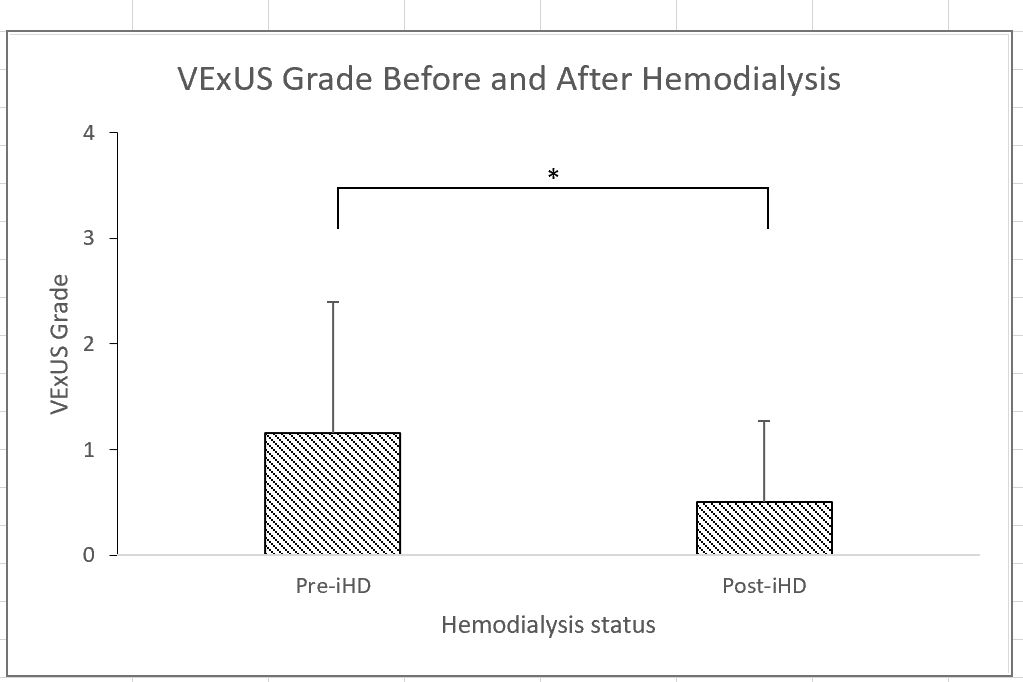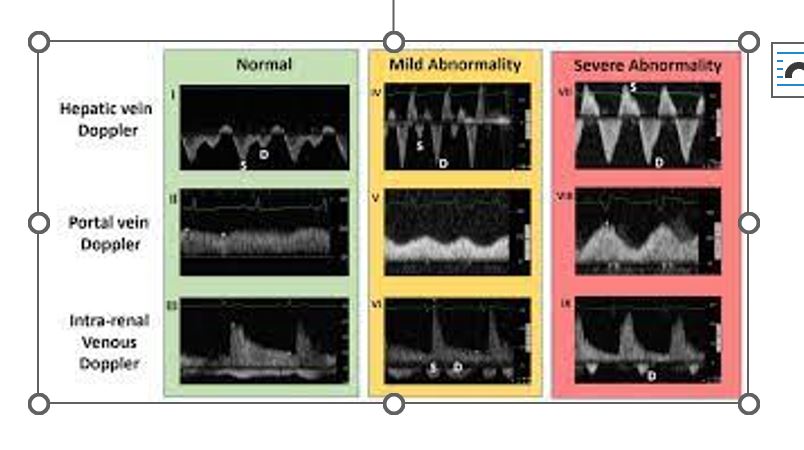Background: Venous excess ultrasound score (VExUS) is an emerging point-of-care volume assessment tool that utilizes inferior vena cava diameter and doppler waveforms within the hepatic, portal, and renal veins to predict venous congestion. High VExUS grades have previously been validated against elevated filling pressures during right heart catheterization in patients with steady-state fluid balance; however, the dynamic nature of VExUS during large-volume fluid shifts such as hemodialysis has yet to be elucidated.
Methods: Thirty-one patients with end-stage renal disease undergoing intermittent hemodialysis (iHD) were evaluated with transabdominal VExUS and lung ultrasonography before and after same-day iHD. We used paired t-tests to assess differences between VExUS score, number of lung fields with B-lines, and subjective dyspnea grading before and after iHD.
Results: The average age of patients was 56.5, 61% were male, and average BMI was 25.9. Paired t-test analysis of sixty-two VExUS examinations revealed a mean volume removal of 1.8 liters and a post-iHD VExUS grade decrease of 0.65 (Figure 1, p = 0.005). The mean difference in the B-line score following iHD was 1.1 (p=0.002). There was no significant change in subjective dyspnea scores.
Conclusions: Large-volume fluid removal during iHD correlated with a statistically significant decrease in VExUS grade, demonstrating promise as a potential point-of-care volume management guidance tool. Avenues of further research within hospital medicine should aim to examine changes in VExUS with diuresis to improve its accuracy and safety.


